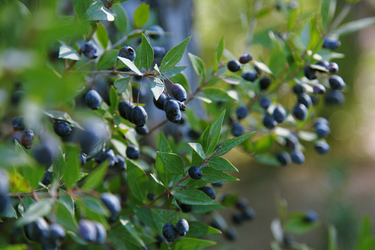 And he brought up Hadassah, that is, Esther, his uncle's daughter; for she had neither father nor mother, and the maiden was of beautiful form and fair to look on; and when her father and mother were dead, Mordecai took her for his own daughter. Esther 2:7 The Book of Esther, which we read on Purim, takes place in in the fourth or fifth century BCE in the Persian Empire. It tells the story of Hadassah and her uncle Mordecai, who was leader of the Jews under the rule of King Achashverosh. Hadassah was sent to become the wife of the Persian king, but the king could not know that she was Jewish, so she took on the Persian name, Esther. The Hebrew word hadassah means "myrtle." Native to the northern Galilee (Myrtus communis), is an evergreen shrub with glossy foliage and white flowers followed by purple-black oval berries. It is drought-resistant with leaves that release a sweet fragrance when bruised. The myrtle, is now rare and endangered in the wild, and it is protected in Israel. It is among the species being planted to transform the Negev for agricultural use through the Jewish National Fund. It’s too early for anything to be done in the Biblical Garden but the catkins are now abloom on the willow, and narcissus and hyacinth bulbs have broken the surface of the soil. We impatiently wait for longer days and warmer sun, the call of doves, the reappearance of hungry rabbits, and the pungent smell of damp soil ready for turning. In this "mud season" of early spring, the garden reminds us that we, too, are soil, and water, and sunlight, connected to each other and to all living things, and indeed we harbor a glimmer of the Eternal as well. Comments are closed.
|
AuthorsMichael Schlesinger is Temple Sinai’s Biblical Gardener. Mike has been gardening since he was eight years old. He used to grow grape vines and make wine when he lived in California. He now tends to our garden, continuing the traditions started by Catherine Walters. Archives
March 2020
|

Affiliated with the Union for Reform Judaism
30 Hagen Avenue • Cranston, RI 02920 • 401-942-8350 Office: dottie@templesinairi.org Rabbi Jeffrey Goldwasser: [email protected] |
Want to sign up for the weekly Sinai Scroll email?
Click here to receive weekly updates on Temple services, events and a message from the Rabbi. |


